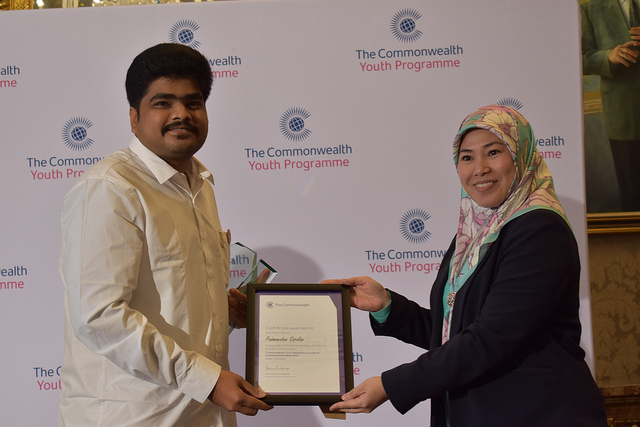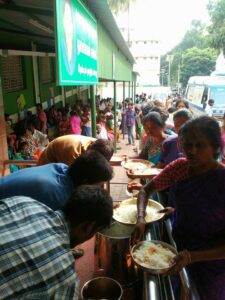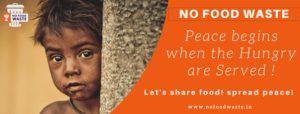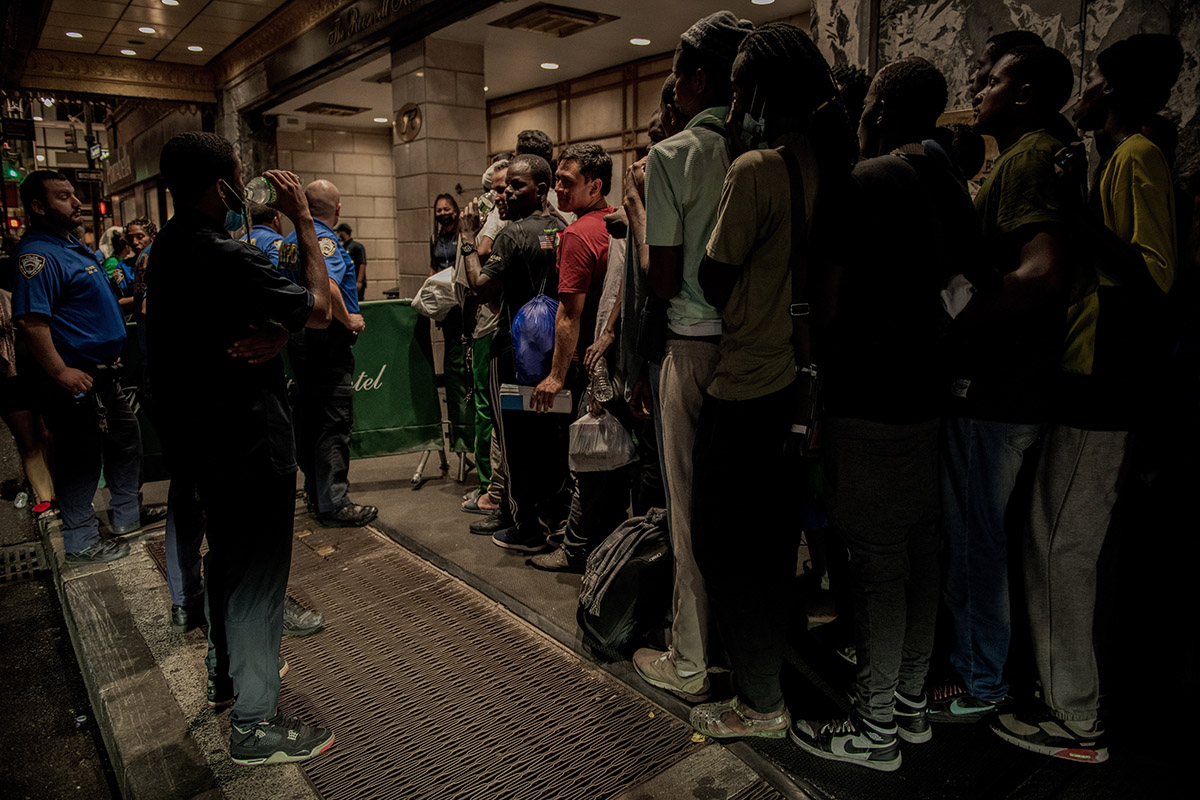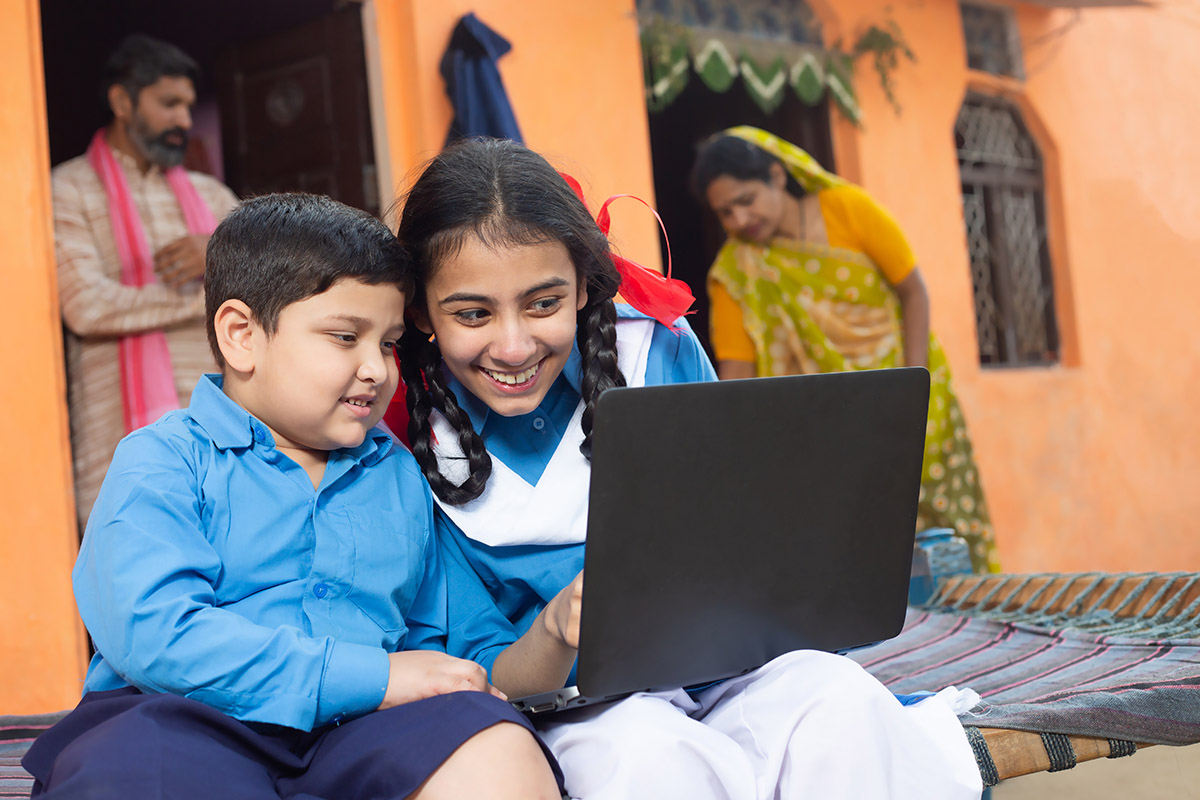Indian youth wins award for feeding the hungry
April 1
Food plays a huge role in bringing people together during celebrations and ceremonies in India and often the surplus food resulting from this goes to waste and ends up in landfills, all while another part of the same society sleeps hungry and malnourished.
According to the UN, Indians waste 1.3 billion tonne of food every year! Padmanaban Gopalan, founder of ‘No Food Waste’ seems to have found the perfect solution with his recovery and delivery network for the surplus food; He is channeling this food excess into the plates of the needy, thus mitigating hunger and saving the environment .Padmanaban Gopalan’s organizatio strives towards ending hunger – one meal at a time.
Padmanaban is an engineer from Coimbatore India, who instead of pursuing a coveted corporate job, started his NGO. To date, ‘No food waste’ has packed and distributed over 6.7 lakh or 6.7 hundred thousand plates of food worth more than 3.38 crore rupees and serving an average of 900 people a day!
The initiative is simple and hassle free – with a single phone call or text about you can indicate what your location is and what food you want to contribute and a volunteer will link you to the closest hunger spot or or use their app to locate hunger spots and donate food directly to those in need yourself. Sushma.R.Vishwakarma, 24, a correspondent from Bangalore, India had the pleasure of interviewing Mr Padmanaban Gopalan and following are excerpts of their interaction.
How did the No food waste initiative begin?
After graduating college I noticed a lot of surplus food being wasted in weddings, marriages and parties so I started an awareness programme about it, then in this school where I was conducting the programme a kid asked me “where can I donate the surplus food?” as an answer to that question the idea of No Food Waste was born.
What were the hurdles you faced at the beginning of the initiative and how did you overcome them?
Earlier people used to donate food to nearby orphanage and they also faced a lot of logistical issues with respect to packing, transport etc., which even I faced when I started too, but slowly people started supporting us and now we have a full-fledged transport and storage facility due to the help of the local community and the local government.
Your initiative has moved from a single person working for the cause to a multi city initiative, what is your story of growth?
I distinctly remember my first food collection. I had 11 rupees and I used that to distribute 52 packets of food, 52 people were fed because of that, and that 11 rupees was used for public transport and buying packaging for the food.
Later a lot of people especially the youth got inspired and wanted to take part, thus we created a formula which can be replicated by everyone anywhere. It is the triple C formulae, i.e. Corporation (local government) which is providing us with free space for collection and storage of food in all the cities. Community – we form groups with the local community to volunteer and support either through collection, distribution or creating awareness in public gatherings.
Instead of me running it we have city directors in every city which strengthens the organization at local level and corporate social responsibility (CSR) funds through which people have donated vehicles and we have an app where we use to identify hunger spots where people can drop off food. We are simple where any city with interested youth and other likeminded people can get together and start their city chapter thus we have been successful in gaining momentum faster.
You have mentioned the geo mapping of hunger spots. How does this work?
During the peak periods for weddings/ celebrations, is very high but our recovery and distribution facilities are stretched; We get about100-150 calls in every city but we’ll be able to collect only from 30-40 such places with our network. We wanted to find an alternative for the other people whom we couldn’t tend to and as food is perishable we have a short timeline. So, we thought if we could give the wedding hall / party place a close location (within 2-3 kms radius) then people are willing to go and distribute it themselves rather than waiting for us. Thus we did a study of below poverty line community and survey of slums where people have food once a day and we use some of the parameters like employment whether they are rural immigrants in temporary shelter places how much do they earn etc. We conduct a survey and geo tag them into the app, we also crowd source data for this process which we then verify, and every 3 months we check to add/remove data points from the hunger spots.
Precooked food is perishable- giving a small window of time since for collection and distribution. How do you tackle this? We have the Food Safety and Standards Authority (FSSAI) which has laid down guidelines for food recovery and we have our own guidelines with regards to what kind of food is collectible (like food with coconut and higher moisture level perish faster, as opposed to dry food,so we have time limit to each such food) and we collect food at three time slots. In the mornings, we collect surplus food from hotels.
Halls get collected from 10-11:30 am and we distribute this from 12 to 1:30pm. Meanwhile afternoon food gets collected at 3pm to 4:30pm and reach the people by 6 pm, so we keep the time between collection and consumption within 3-4 hours. At nights we get calls after 9:30pm which we distribute after 10pm.Sometimes we collect food like rotis that are dry and can be stored up to 3 days to store overnight and distribute the next day morning for breakfast.
What is the mode of distribution of the collected food, is it packed or served?
In south India food is predominantly cooked in big vessels and we use similar big vessels to collect and transport in our vehicles to the distribution centre, if it is a public place we provide biodegradable plates but if it is a hungry community then they have their own vessels to which we transfer our food for their distribution
How do you envision No food waste in the upcoming years?I believe our success lies in shutting down our operation and not in expansion. I want the hunger issue to be solved and if we grow it only implies that the problem of hunger has only grown bigger, but it should be reduced. My mission is that I should feel our necessity to decrease and close down. I also want to involve youth in food and hunger related issues to increase awareness like Foodcorps where people can volunteer more often and address the issue.
How do you think the youth can contribute to social welfare?
I always tell the youth that the local action they take can always have a global impact, particularly in my country where the youth want to be socially active but get tied down by other social commitments.I urge them to get social welfare volunteering exposure at least during their college days by creating their own method of doing things either in local or hyper local level.
The Commonwealth Youth Awards for Excellence in Development Work highlights the contributions of young people who are making a difference in their communities and celebrates their contributions to the Sustainable Development Goals (SDGs).
Photo credit: No Food Waste and The Commonwealth
About Sushma.R.Vishwakarma,: I’m an architect and an artist housed inside an extremely energetic individual. I love working for a social cause and I’m a volunteer at Teach for India. I strive towards local community building in causes for education for all. I truly believe art can transform society and a Winnie the pooh said ”THINK, THINK ,THINK!!”
…………………………………………………………………………………………………….
Opinions expressed in this article are those of the author and do not necessarily represent the views of the Commonwealth Youth Programme. Articles are published in a spirit of dialogue, respect and understanding. If you disagree, why not submit a response?
To learn more about becoming a Commonwealth Correspondent please visit: http://www.yourcommonwealth.org/submit-articles/
……………………………………………………………………………………………………………
